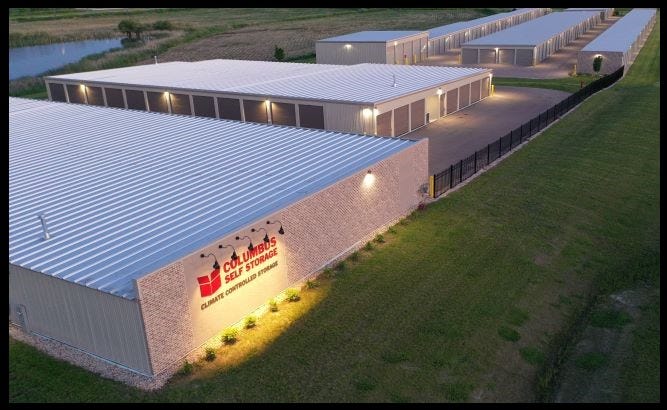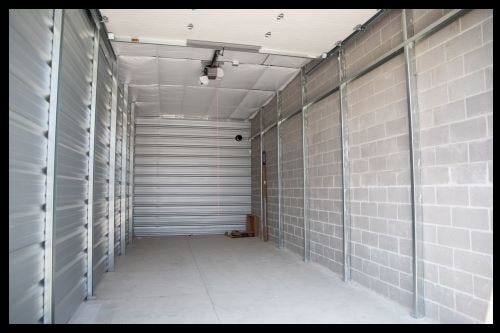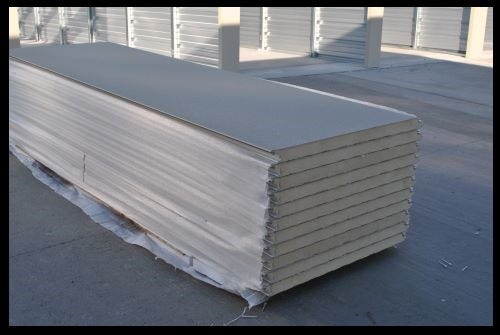Building Climate-Controlled Self-Storage: Important Aspects to Consider
There’s strong demand for climate-controlled self-storage in many markets, but this product requires a different construction and design approach than traditional drive-up units. In this article, get guidance on specific requirements and components to consider.
April 3, 2024

Whether you’re building your first self-storage facility or expanding an existing one, it’s smart to explore whether to include climate-controlled units in today’s market. Higher rent, better land coverage, and the elimination of moisture and dust from units are incentives. However, climate control requires a specialized approach. Below, I’ll examine critical considerations to help determine if this product is right for your project.
Let’s start by discussing what “climate control” means in a self-storage context. Most facility operators set their heat between 50 and 60 degrees and the air conditioning around 80 degrees. Climate-controlled storage should also limit humidity to 50% or less.
During much of the year, you need neither heat nor AC to keep a slab-on-grade building between 50 and 80 degrees, but you should control humidity. Without dehumidifiers, you have temperature-controlled storage, not climate-controlled; and in humid climates, you may have conditions for mold and mildew.

Columbus Self Storage in Columbus WI 2.jpg - Columbus Self Storage in Columbus, Wisconsin, which offers interior and drive-up climate-controlled units with insulated sectional doors
Determining Demand
Climate-controlled self-storage is becoming a more high-demand product, and it often generates higher income per square foot—but not always. In markets that are saturated with retail conversions or large multi-story projects, standard drive-up storage may command a premium due to short supply and perceived convenience.
Conduct thorough market research to compare rates for climate-controlled vs. standard storage in your target area. Also, be aware that when given the option, consumers prefer ground-level units to those accessible via elevators or stairs.
These days, there’s a way to offer the benefits of climate-controlled space with the convenience of ground-level, drive-up access. These units use insulated sectional doors to be airtight. They’re also relatively rare, which means they can set your facility apart from others. Exterior, climate-controlled units are particularly popular in northern climates for classic car storage or as a more upscale option for typical moving needs.
Heating and Cooling
The type of equipment used for climate-controlled self-storage will vary by region and is generally comparable to that used in new-home construction. Each conventional air handler requires a 5-by-10 mechanical room. In climates where heating and cooling needs are less extreme, smaller, ceiling-mounted AC/heat-pump units, also known as mini-splits, are more common. These tend to cover smaller zones, often around 2,500 square feet.
Your AC unit will create condensation, so you’ll need a drainage system in your building or leading to the exterior. High-efficiency (condensing) furnaces also create liquid condensation, which in winter months can’t be drained outside, as it’ll freeze. Lower-efficiency gas furnaces require a metal chimney through the roof, whereas higher-efficiency “condensing” furnaces can be vented sideways through walls, which is preferred to reduce the risk of leaks.

A drive-up climate-controlled unit at Madison Verona Storage
in Verona, Wisconsin
The exterior portion of your air conditioner, the condenser, should be put somewhere no one can run into or damage it, perhaps at the rear of the building or in a recessed area. Consider protecting it with bollards. Definitely avoid roof placement to minimize leaks.
In extreme northern climates, some self-storage facilities use a heated slab and have no air-conditioning or -handling equipment at all. In most of the North, HVAC systems can generally cover up to 5,000 square feet per zone with gas-fired furnaces and conventional AC.
Insulation
Your energy code may dictate how much insulation you’ll need for your climate-controlled self-storage facility, but in some states, you can decide what you wish to invest in efficiency. Just keep in mind that better insulation creates a more efficient building, which will lower your monthly utility expenses. Lower expenses mean higher net operating income, which increases facility value.
I built my self-storage facility in Wisconsin before the implementation of current energy codes. I selected 10 inches of fiberglass roof insulation and 6 inches of wall insulation. This level is economical and quite effective. In past decades, it was more common to see just 6 inches of roof insulation, but increasing energy costs have made it attractive to use more. Your building manufacturer should also provide thermal blocks between the building structure and roof panels.

Insulated metal-sandwich panels used to comply with local architectural
and energy-code requirements at Sun Prairie Self Storage
in Sun Prairie, Wisconsin
In areas with 2015 and newer energy codes, your structures might require a more involved roof-insulation system to better fill space between the purlins and avoid compressing it. This can include additional strapping to support the insulation. Newer codes may also require uninterrupted wall insulation, meaning it isn’t enough to have insulation between wall columns. Foam board with taped joints between the structure and exterior paneling is added to comply with regulations. Insulated, metal-clad foam panels can simultaneously address the energy code and add a premium exterior finish.
Other Deign Logistics
While standard, drive-up self-storage buildings are commonly 30 or 40 feet wide, the interior hallways needed for climate-controlled space lay out more efficiently in a 50- to 70-foot-wide structure. You can go even wider than that, but consult with your building manufacturer early in the planning process to understand any length limitations in roof panels and pitch.
Here are a few other things to know about designing climate-controlled storage:
For very large buildings, rubber membrane (also known as TPO, Thermoplastic Polyolefin) roofs offer more design flexibility and interior drains.
Hallways are usually 5 feet wide, and units generally range from 5-by-5 to 10-by-20.
The buildings can be erected along lot lines with access to one side only. This reduces driveway expense and increases land utilization.
It’s best to create a layout that doesn’t require customers to travel more than 100 feet to their unit. If some must travel further, consider implementing good/better/best pricing in which you charge more for the spaces that are easier to access.
Buildings that contain interior, climate-controlled units are generally accessed using a traditional swing door. These are often recessed into the structure to provide some shelter from the elements and prevent the door from swinging into traffic. Some developers opt for power-sliding doors. For a better customer experience, a shade canopy, enclosed loading bays or drive-thru corridors can be included.

Sun Prairie Self Storage in Sun Prairie, Wisconsin
Fire code is an additional design consideration. Depending on your area, you may be allowed up to 12,000 square feet of space before you need a firewall or sprinklers. However, some jurisdictions allow only up to 2,500, and the requirement can differ for interior vs. exterior units.
Final Considerations
The design and permitting process for climate-controlled self-storage can be more involved than that of traditional drive-up units. You may need an additional engineer for your HVAC system, though your equipment vendor may be able to fill this role. Using a separate engineer adds expense, but you’ll have an easier time sharing the plan with multiple contractors to get bids.
You may also need to provide life-safety plans to show that you have proper egress paths and emergency lighting, and that your buildings comply with the Americans With Disabilities Act.
Hopefully, I’ve provided you with some ideas, whether you’re planning a new site or an expansion. Climate-controlled units are popular today, with many benefits for self-storage customers and owners. It’s definitely worth considering for your next project.
Steve Hajewski is regional manager for Trachte Building Systems, which designs, manufactures and erects a full line of pre-engineered and customized steel self-storage systems, including single- and multi-story, portable storage, interior partition and corridor, and canopy boat/RV. He’s also a partner of three facilities in Wisconsin and a frequent contributor on Self-Storage Talk, the industry's largest online community. For more information, call 800.356.5824.
About the Author(s)
You May Also Like





